The difference between whittling and woodcarving is not much and comes from the tools used. Some say there is no difference between the two, which boils down to preference. An American woodworker might refer to themself as a whittler, while a German woodworker may refer to themself as a carver.
Are there any differences between whittling and woodcarving?
What is Woodcarving?
Woodcarving uses knives, chisels, and other handheld tools to create a wood figure, sculpture, figurine, or wooden object. With wood carving, you can create figures or decorate wood. Woodcarving is broad and features different techniques such as whittling, chip carving, relief carving, carving in the round, and power tools carving such as using chainsaws.
> Recommended Reading: Beginners Guide to Wood Carving
Tools Used in Woodcarving
Woodcarving can be simple or complex, and different tools are employed to work on the wood. From simple wood carving knives to power carving tools, these can be used to help carve wood. Below are some of the tools used in wood carving.
Woodcarving Knives
A knife is probably the first tool a wood carver will start with when carving. Knives can be used for anything like roughing up wood, performing different cuts, and chip carving. There are different types of wood carving knives, and each works to serve a different task.
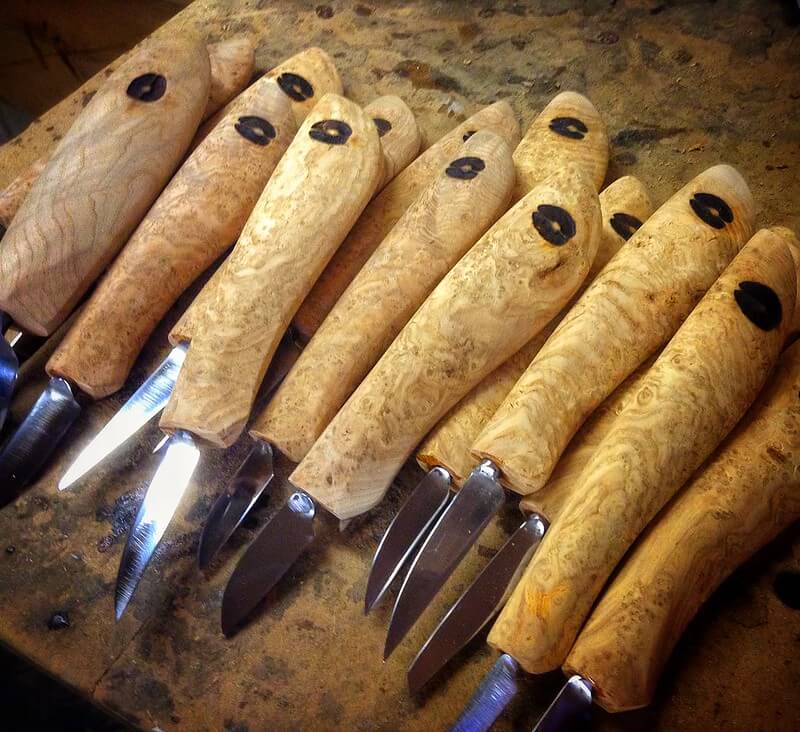
Chip carving knives make precise cuts in wood to get specific shapes or chips. Whittling knives are great for roughing wood and doing different woodcuts to carve wood. Apart from these two major woodcarving knives, you can come across hook and spoon knives.
> Recommended Reading: Types of Wood Carving Knives
Woodcarving Chisels
Chisels are typically used with a mallet or hammer to rough or chip material away. You can work with different types of wood carving chisels, from some with edges on the left or right side to others with edges on both sides.
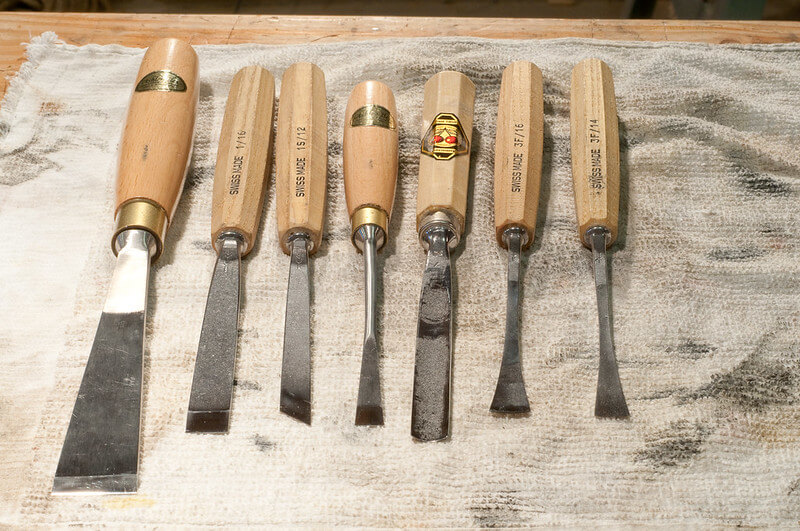
Some of the woodcarving chisels include straight chisels, skew chisels, and fishtail chisels. All these are available in large and small mini sizes. Beginners are good at working with larger chisels, while mini chisels are meant for detailed work.
Woodcarving Gouges
Gouges are very similar to chisels, but they have a curved edge instead of a flat one. They are designed for carving grooves and trenches without the corners of the gouge digging into the wood. Apart from this, gouges also work great for removing excess wood quickly.
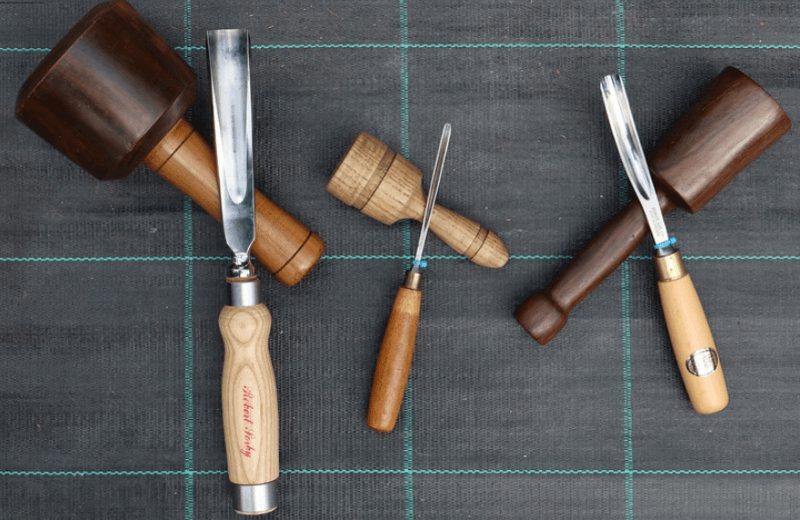
Mallets and Gouges
Gorges also allow you to stop cutting around objects. There are different types of gouges, but they can be grouped into long and short bent gouges. If you’re looking to start relief carving, gouges are a great tool to learn how to use.
V Woodcarving Tools
As the name suggests, V carving tools have a V-shaped cutting edge. V carving tools are designed for carving grooves into the wood. They are great for making lines and small details in wood. V carving tools are closely related to veiner, which allows cuts with more depth than your standard gouge.
What is Whittling?
This is the process of carving a piece of wood with nothing more than a pocket knife or whittling knife. Whittling is limited to small objects that can be handheld while working on them. Usually, whittling is done as a hobby or pastime activity where you start with a piece of wood to create anything from a toothpick, gnome or exploring different cuts.
The major difference between whittling and woodcarving is the end product. A woodcarver is in the process of creating an object or decorating wood. However, a person whittling is passing the time on a piece of wood, shaving it to create an object that may not be considered important but useful or artistic.
Other than the end products, the tools also differ. Below are the tools used for whittling.
> Recommended Reading: Beginner’s Guide to Whittling
Tools Used to Whittle
Whittling Pocket Knives
Most whittlers out there started with nothing more than a pocket knife. Pocket knives are great because they allow you to whittle them anytime you find a piece of wood. They also provide multiple blades in one compact design. You can use the different knives for roughing out or making intricate details into your woodcarving project. If you’re looking to start whittling, check out our best pocket knives for whittling.
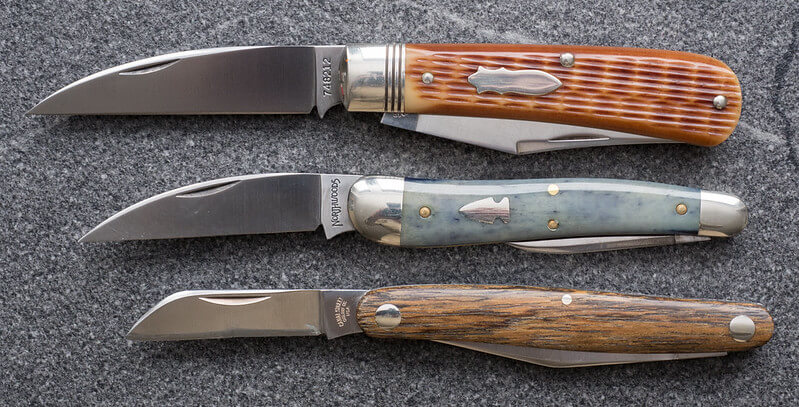
Whittling Pocket Knives
Specialty Whittling Knives
Unlike foldable knives, specialty whittling knives have a fixed blade, meaning they do not fold. This makes them sturdier, and a larger handle makes them fit comfortably when whittling for long sessions. Specialty knives can further be divided into cutting knives and detail knives. A cutting knife is strong and great for removing larger chunks of wood. Detail knives have a smaller blade and are great for cutting small details into the wood.
Other Woodcarving Techniques
Apart from whittling, there are other three types of woodcarving techniques. These include chip carving, relief carving, and carving on the round.
Chip Carving
Chip carving is one of the simplest forms of wood carving but requires precision and practice to get right over time. It is done on a flat piece of wood to decorate it. In the process, a woodcarver chips away a bit of wood to create an aesthetic design on the wood’s surface.
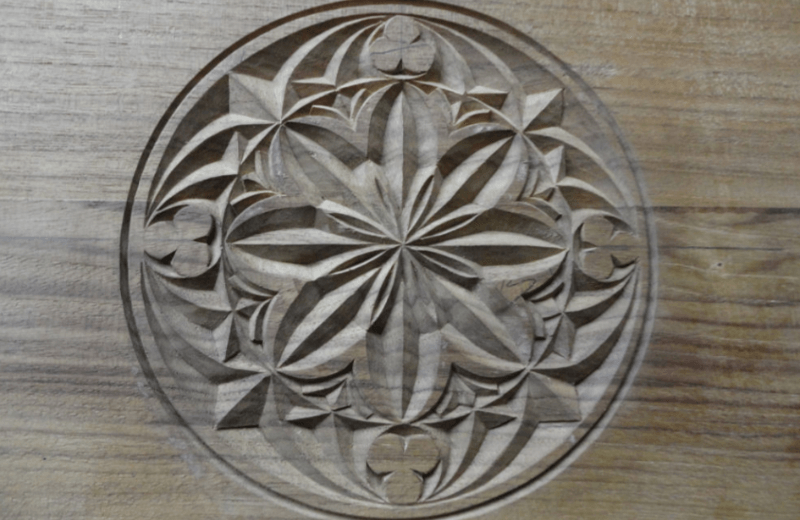
Chip Carving Wood
> Recommended Reading: Chip Carving for Beginners
Relief Carving
With relief wood carving, the design is carved to protrude from the piece of wood, which creates a sense of depth. Relief carvings have a flat back with the image protruding on the front. A relief carving can be low or deep, depending on the depth of the image from the background surface.
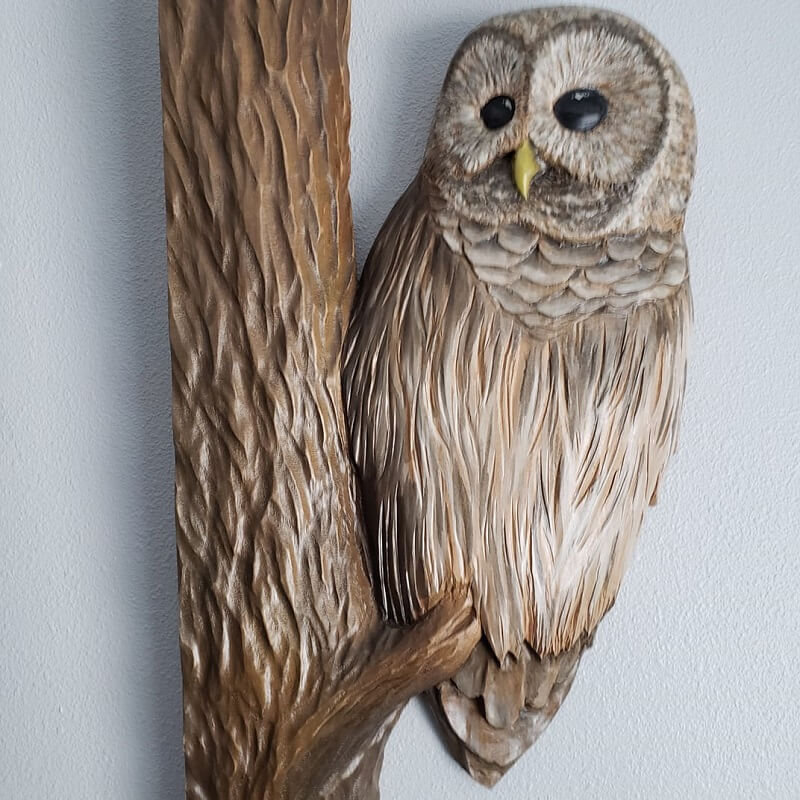
Relief Wood Carving
> Recommended Reading: Relief Carving for Beginners
Carving on the Round
In this woodcarving technique, the object is carved in three dimensions. The object can be large or small, but it typically has a lifelike texture. Although it seems harder than other woodcarving techniques, carving on the round can be easier than relief because the proportions and perspectives are always true.
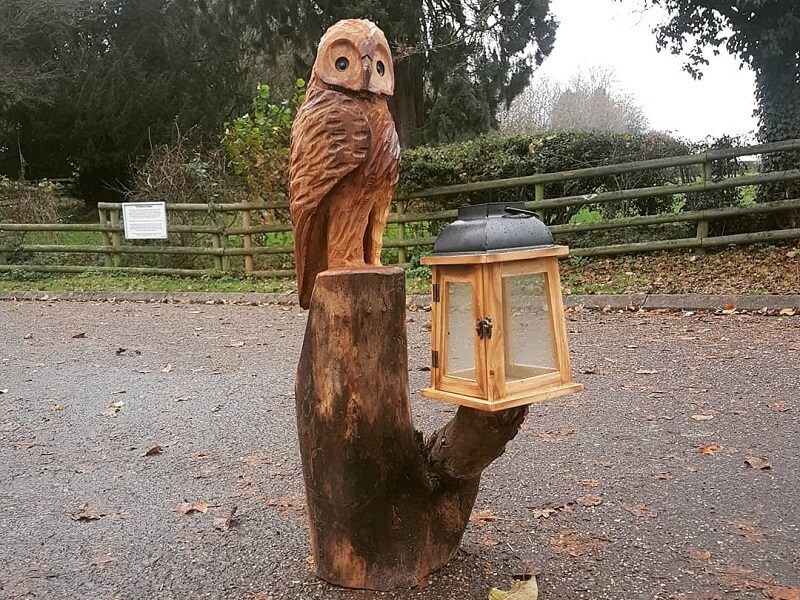
Carving on the Round